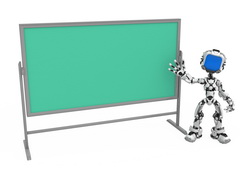Teaching robots to grow up
The goal of the SIGNAL consortium was to develop a device that could ‘grow up’ from an infantile system to a fully matured entity. To fulfil this objective, project partners formed an interdisciplinary team with research groups from both Information Technology and the Life Sciences. The robot was helped to 'develop' through a combined strategy and structure known as the systemic architecture. 'Growing up' and increasing knowledge through learning and experience is a key feature of living things. The team trained a robot’s control system using a network of artificial immune system based Rule-like association systems (RLAs). The RLAs can be successfully applied to robot control and training robot behaviour through reinforced learning. The RLAs build up the device’s hierarchical systemic architecture, which helps it to ‘grow up’. Each RLA holds information about the robot's environment and is made up of three parts. The RLA includes a sensory condition, C, an action command, A, and an expectation of the impending sensory input, E. The researchers generated RLAs using a short-term memory, which stores brief sequences of information concerning recent and significant sensory and motor events. The information held in the short-term memory is used as the basis for creating new RLAs. However, the RLA includes an expectation E which is concerned with the consequences of an action. Therefore, the RLA can only be created when the system has the information regarding the consequence E when action A has been carried out. Connecting the RLAs in a way that creates a network increases the amount of knowledge a robot has about its environment. The robot, which possesses infrared sensors and is autonomous and mobile, is able to demonstrate different behaviour such as following a wall or the avoidance of obstacles. The results indicate that robots no longer need to be programmed when they can be taught tasks through performing actions and judging the resultant behaviour.







